|
ROMERO-HIDALGO ARTISTS' STUDIOS
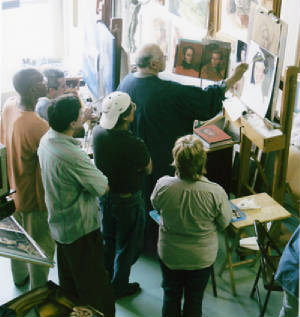
Romero-Hidalgo is a private art studio to the teaching of classical and realist painting and drawing in the tradition
of the old masters. This teaching harks back to the Italian 14th century, and in intimately connected to the systems of learning
practiced in the academies of the 19th century.
It is the outcome of over twenty-five years of study and experimentation on the part of its founders: Abdon J. Romero, and
his wife Sonia Hidalgo. The end result is a learning process that enables students to acquire the technical proficiency that
is a prerequisite for the creation of competent works of art.
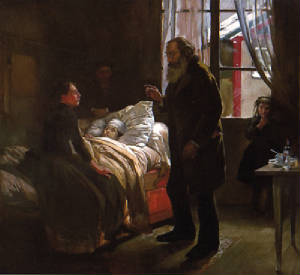
About the Teacher
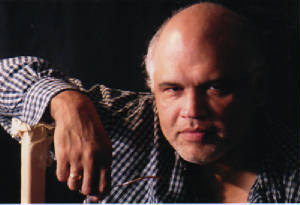
Abdon Jose Romero Diaz was born in Maracaibo, Venezuela, on January 19, 1956. He was interested in drawing and painting
since a very early age. He actually started painting with watercolors and drawing in ink at six years of age. When he was
eleven years old, he attended the Julio Arraga School of Fine Arts, but dropped out before the year was over, repulsed by
its "avant-garde" methods of painting that were fashionable at that time.
He sadly realized in time that no institution of learning had an efficient method of teaching the fine arts. There was
no public or private school or university whose instructors had a good command of the skills and knowledge that are needed
in order to inculcate the disciplines of drawing and painting. As in Europe, there were a few places where one could gain
access to the techniques of the past, and realism was somewhat being taught, but at a really basic level, almost rudimentary.
At that time many young people, having no other choice, succumbed to the methods an ideas of the 20th century, that were totally
alien to formal education in the fine arts. Having become acquainted with this state of the matter, Abdon Romero began
to teach himself, gathering information wherever he could find it, from old books, from the painters of the past, from manuscript
texts on the subject; those were like small pieces in the great mosaic of the ancient profession of the painter, that had
been destroyed and covered over by a succession of generations that preferred indolence, easy shortcuts, and arrogant ignorance.
THE PRINCIPLES OF THE TRADITION OF CLASSICISM
This atelier's curriculum consists in a series of activities aimed at offering students the oportunity of becoming acquainted
with all aspects of the pictorial space. This approach is closest to teaching methods of the Ecole des Beaux Arts in Paris
and the private teaching ateliers of the 19th century. In fact, the basic structure of the "atelier" method of teaching
has been preserved, while at the same time today's atelier masters have adapted that method to the various social environments
of our times and most certanly also to each pupil's personality. However, the method remains constant: sight-size for all
exercises.
The first activity perfomed by pupils upon joining the atelier consists in executing copies of the drawings contained
in the drawing course authored by Gerome and Bargue. These first exercises are done in pencil, then with charcoal, doing work
of increasing technical difficulty. This course structured in a methodical sequence that begins with simple contour exercises
followed by more complex work in chiaroscuro.
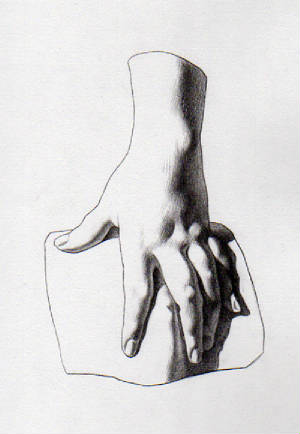
COPIES AFTER THE OLD MASTERSIn this exerccise the student has the opportunity to study various ways of artistic expression.
The drawings to be copied are chosen by the students in consultation with the master. These drawings are realized using the
same medium used for creating the originals. The student will acqquire the technical ability of expressing himself using
various mediums: pencil, sanguine, ink, charcoal, and so on.
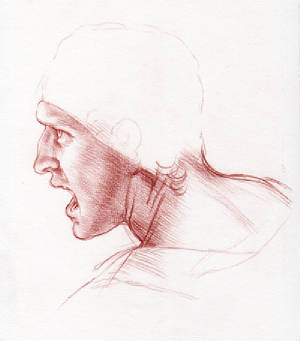
DRAWING AFTER PLASTER CASTS This is the first exercise with which drawing from nature begins. Drawing after ancient
models (as it was called in traditional academic teaching) takes us back to the Renaissance, though it was even more frequently
taught after the emergence of the first ateliers, like that of Rembrandt or that of David for instance. The white plaster
cast placed in stable lighting conditions, offers the student day after day the opportunity of studying the basic principles
of drawing: line, proportion, and what is more importandt, the use of chiaroscuro and the creation of the illusion of tri-dimensional
volume in space.
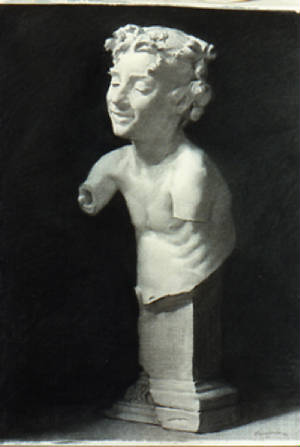
|